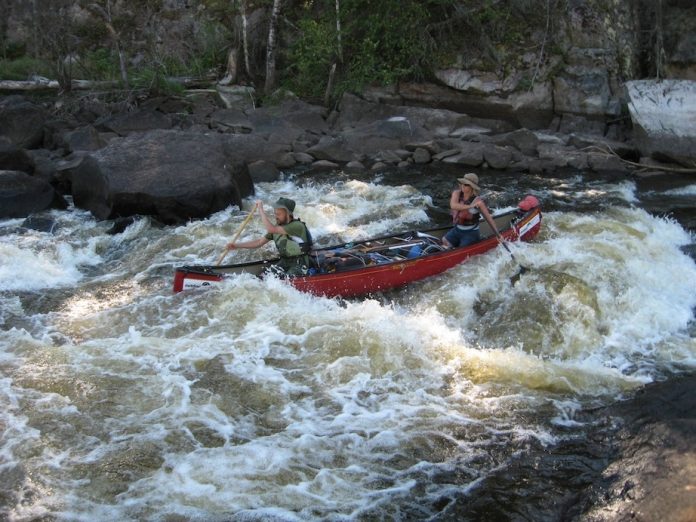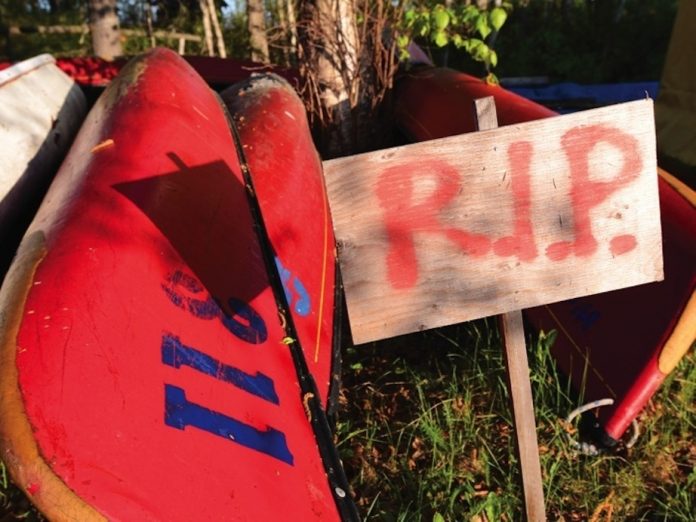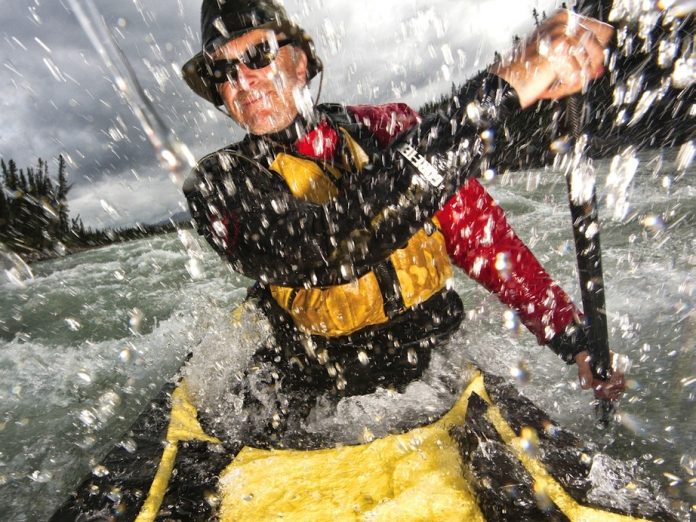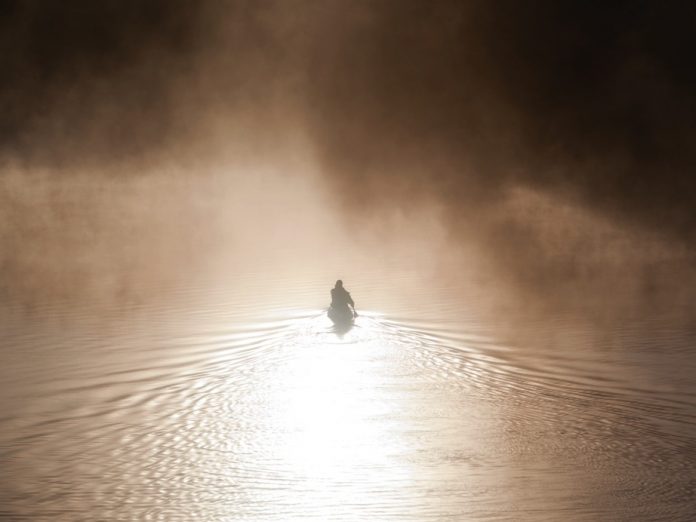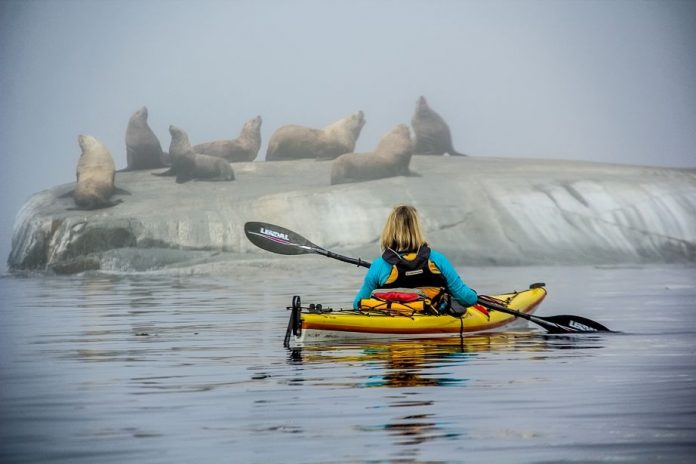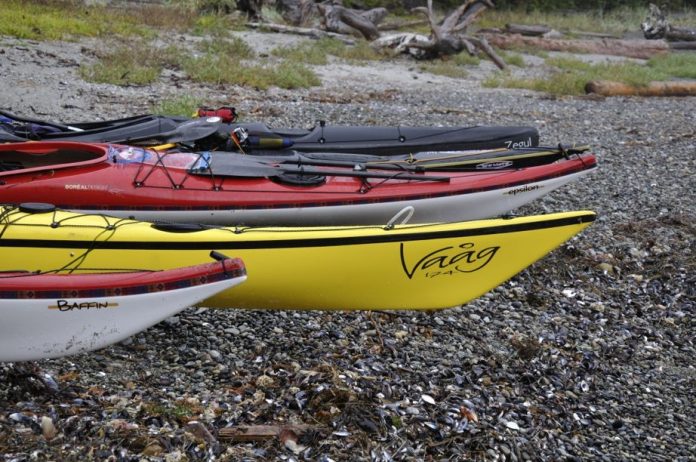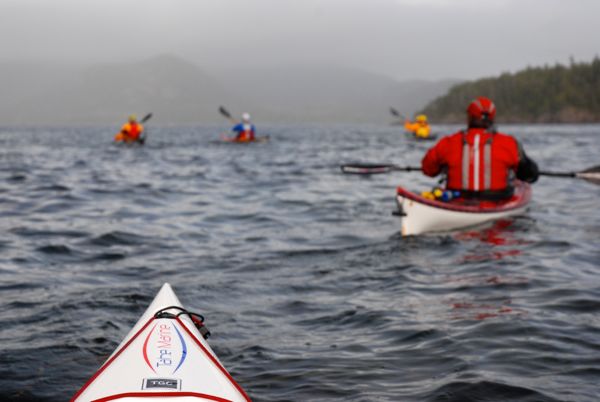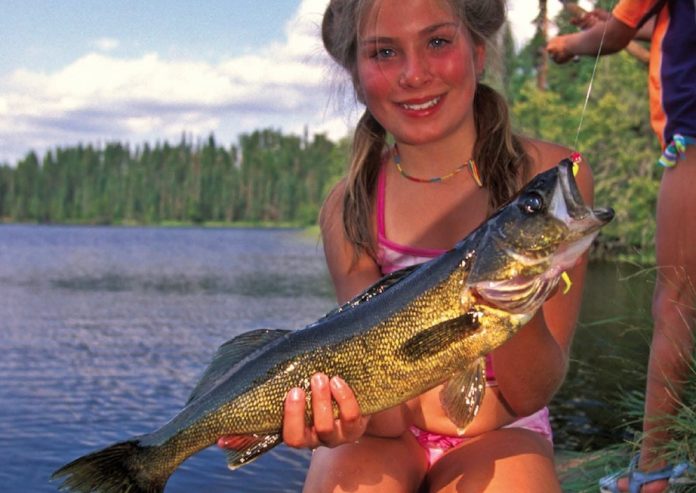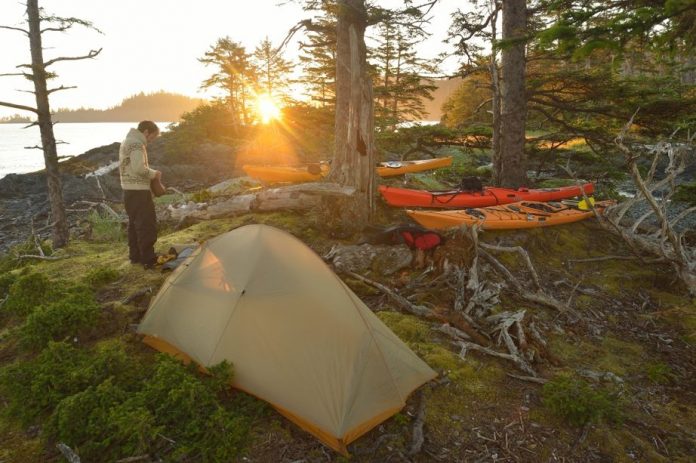As early as 2015, retailers could see the last Royalex canoe leave their shops. This past summer, PolyOne announced it would cease production in April 2014 of the long-favored hull material. Since then, the paddling community has been wrestling with the ramifications of the decision and what it means for the sport.
“One year from today, we won’t have any Royalex left in our warehouse,” confirms Bill Kueper, vice-president of Wenonah Canoes.
Thanks to its near indestructability, for 35 years Royalex has been the go-to material for whitewater boaters, summer camps and remote expeditions. Aluminum was the choice for many until 1978, when Old Town Canoes and Kayaks touted the durability of its new Tripper by tossing one from the roof of its Maine factory. After it escaped virtually unscathed, paddlers took notice. Since then, Royalex has offered a compromise between durability, performance, weight and price that paddlers love and isn’t available in other materials.
While Wenonah will feel the effects of the shutdown, says Kueper, they’re in better shape than many brands since their boats are produced through a variety of manufacturing technologies.
“Royalex accounts for 19 of our canoe models, but 15 of those are also available in composite hulls,” he says. “Still, it’s going to leave a void. We’re looking at new concepts and approaches, but we don’t have the home run right now.”
The upside to the announcement is that it will stimulate and accelerate new material development, but “there are almost always some growing pains in developing new materials,” says Buff Grubb, product manager at Mad River Canoes.
One of the oldest molders of Royalex hulls, the material represents a core part of Mad River’s business, accounting for 12 of 21 models. Grubb expects there will be increased interest in durable composite materials and polyethylene [the plastic of whitewater and lower-priced touring kayaks] hulls, but notes that the cost of tooling poly hulls is five to six times the cost of a mold for a Royalex hull. “I’m afraid that will mean less evolution of design in the short term, as companies will need to keep hulls in their line longer to recoup development costs,” he says.
According to Grubb, paddlers should expect an increase in used boat prices, particularly for whitewater solo and tandem boats, given that the future supply looks finite. “I think we’ll also see paddlers babying their boats a bit more and taking better care of them, knowing that replacements might now be available,” he adds.
“There’s just nothing else like Royalex,” agrees Tim Miller, owner of Nova Craft Canoes. Royalex canoes represent a substantial portion of his business and he’s holding on to hope that another manufacturer will buy the rights to the material. “It’d be a very sad day if they close the plant and Royalex doesn’t go anywhere else,” he says.
PolyOne did not answer our queries about potential buyers for Royalex, only confirming that the company will cease production in April 2014.
Andy Phillips, owner at Composite Creations, and an expert at making composite crafts for water and air, is also rooting for a company to swoop in and buy the material line. “It’s going to hurt the industry. Royalex allowed a lot of people to enter the sport as a first-generation paddler,” he says.
According to Phillips, creating a composite boat as durable as Royalex is easy, the difference is pricing. Since composite boats are more labor intensive, customers would see a cost increase of 30 to 50 percent.
However, the boon could be new designs with performance improvements. Since composite materials are easier to manipulate, the market could see narrower bows and sterns that just weren’t possible with Royalex.
Phillips’ biggest concern right now is public outreach, letting consumers know about their alternatives.
“We have this identity crisis in paddling where plastic boats are heavy and disposable and composites are on the other end of the spectrum, with a lightweight reputation, but people are afraid they’ll crack. We need to overcome that association,” says Phillips. “Composites don’t have to be fragile. If they were, we wouldn’t be using the materials on runways and flying.
This article originally appeared in the 2014 Paddling Buyer’s Guide. Download our free iPad/iPhone/iPod Touch App or Android App or read it on your desktop here.



